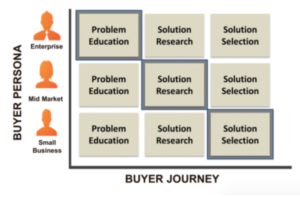My name is Jason Levin and I am a Marketing Consultant for RankSense. I help our users achieve their goals with our technology and educational resources. I am a big fan of books, and enjoy sharing my findings with others. Last month, I covered From Impossible to Inevitable by Aaron Ross.
In this article, I’ll be dissecting The Sales Acceleration Formula by Mark Roberge; Roberge was the fourth employee at Hubspot and the company’s former Chief Revenue Officer of Hubspot’s revenue division. In this book, he reveals Hubspot’s data-driven methods regarding hiring, training and managing a high-performing sales team that grew the company to +$100m.
Part I: The Sales Hiring Formula
Roberge starts by uncovering the characteristics of a successful salesperson. I was happy to see that the data swayed away from convincing and closing ability, but rather on these five traits:
1. Coachability: The ability to absorb and apply coaching
How do you determine coachability in a sales candidate?
- Step 1: Set up a role play exercise that models a meeting with a buyer.
- Step 2: Evaluate candidate’s ability to self-diagnose.
- Step 3: Evaluate the candidate’s ability to absorb and apply coaching.
Roberge notes that most candidates will still screw up on their second try, but if they actively tried to take your advice, then that shows coachability. If they hit it out of the park, Roberge says HIRE!
2. Curiosity: The ability to understand a potential customer’s context through effective questioning and listening
Do they ask questions? Are they smart questions?
3. Prior success: a history of top performance or remarkable achievement
If they were in sales, where did they rank? What about college sports or grades? Are they an entrepreneur?
4. Intelligence: the ability to learn complex concepts quickly and communicate them in an easy to understand manner
At RankSense, we like to give potential candidates projects for them to complete and see how they do. It is common for hiring managers to give candidates multiple articles about their industry after a first interview, and drill them with questions on the next one.
5. Work ethic: proactively pursuing the company mission with a high degree of energy and activity
Roberge suggests grading work ethic based off of observations during the interview process, reference checks, and behavioral questions.
Something Roberge says really struck a chord with me – to paraphrase, the best sales candidates are actively being recruited at all times. I always wondered how my Mom was getting job offers at random times, and I guess she must be pretty fricking good at her job – good work Mom! Moral of the story: You can’t find all your candidates on Ziprecruiter. A better option is to create an agency within your company focused on recruiting employees. With the power of LinkedIn, recruiters can lock down by school, geographic location, job title, etc.
I was fortunate enough to find RankSense via Handshake, a software for college students to find internships and jobs with recruiters. Once I came on board, I brought on three more of my friends – Morgan Lore as a Market Development Representative, Anirudh Tatavarthi as a Technical Support Intern, and Jason Gizo as a Technical Support Intern. Who says you can’t have a work atmosphere if you are working remote?
Part II: The Sales Training Formula
Roberge wrote that the best-trained salespeople have experienced the day-to-day job of their potential customers. I know this is definitely true, and one of the main reasons why our CEO Hamlet Batista hired me. I had 1) experience working for a franchise system that fit our ideal customer profile and 2) I currently run a Facebook Ads agency called Ten Daisies.
While Facebook Ads is outbound marketing and SEO focuses more on inbound marketing, the goals are similar: get clients to click on your site and move forward in the buying process. So what’s the takeaway? If you are looking for a job in Sales or Marketing, then start by selling or marketing something yourself! Show that you can do it on a smaller scale. It doesn’t have to be anything too complicated. In high school, I started selling t-shirts for charity, and by the time I was 19, I had sold $40k+ in stickers online. Stickers!!! E-Commerce has changed the world forever!
Part III: The Sales Management Formula
Roberge recommends teaching new sales hires one skill at a time rather than bombarding them with information. This definitely works better for me. I struggle to process and retain verbally-given information when given too much of it. The best way for me to learn is to give me something to read or a task to do.
Roberge offers a few ideas regarding sales compensation plans – the main message though is 1) to keep things simple and 2) to let your sales team offer up ideas on the structure. A really unique idea that Roberge implemented was to offer salespeople $2 per $1 MRR signed BUT if the client churned within the next four months, the salesperson would receive nothing. For SaaS companies relying on MRR, churn is the enemy! So what better way to decrease it than take away salespeople’s commissions; this strategy motivates salespeople to find better, higher quality clients.
He also brought up the concept of running sales contests for your team AND more importantly, running them with teams; rather than an intense competition with backstabbing and undermining, there is collaboration and teamwork.
Part IV: The Demand Generation Formula
This section was really eye-opening for me. Hubspot focuses on inbound marketing, and sure, I understood the concept, but I did not understand why it was so important… Search engines used to just rely on meta tags for ranking, but then big bad Google came along and started ranking websites based off of inbound links, social media followers, etc. This made for a more reliable ranking process. What is the best way to create more inbound links (other websites linking to your website)? Make good content on a frequent basis! What is the best way to grow your social media following? Make good content on a frequent basis!
Roberge also set up a buyer matrix. No, this is not Neo trying to figure out where to buy his sunglasses. It looks more like this:

Because time is valuable and salespeople cannot go after every lead and you should not go after every lead in the same manner, it is important to spend your time wisely. With the buyer matrix, you are able to customize how you go after each kind of lead. For example, say we have a potential buyer in the “Small Business/Problem Education”; when this buyer visits our website, she should be greeted with a call to action to download an ebook on small business marketing trends. If she moves forward, the sales team should connect with her and reference that call to action.
Part V: Technology and Experimentation
In this section, Roberge writes on the benefits of using sales technology to speed up the process. Way ahead of you Mark. I have come to become good friends with Salesforce these past few months … maybe too good of friends.
Roberge also reminds the reader not to be afraid to try new things and fail. Again, way ahead of you Mark. Failure is the only way to succeed. I’ve been doing it for years! We were using Apollo for a few months, and while the service does what it is supposed to, we were not getting any results. We abruptly said goodbye and switched over to Intercom for our internal marketing.
Overall, Roberge’s The Sales Acceleration Formula brought up some really unique ideas and strategies for tackling sales within a SaaS company. His data-driven approach is exactly what we focus on here at RankSense. The numbers don’t lie!

